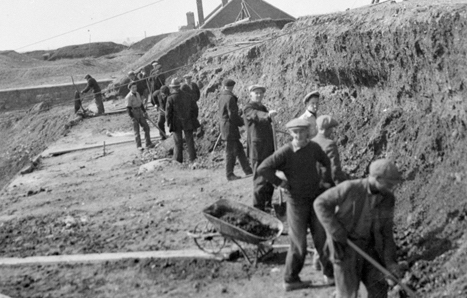Homeless Men during the Great Depression
The impacts of the Great Depression were heavily felt throughout Canada when millions of Canadians became unemployed, financially unstable and even homeless. The Great Depression was the longest and worst global economic in modern history that impacts millions of people around the world from about the laste 1920s to early 1940s. By 1933, Gross National Expenditure had fallen by 42 per cent and 30 per cent of the workforce was unemployed. (1)
When the depression hit, Canada did not have an strong welfare system which deeply affected those hit by the economic crisis. The federal government insisted that providing assistance was responisbility of municipal and provincial governments while the municipal and provincial governments wanted the federal government to address the issue. As a result, there was little intervention from any level of government. (2)
Unfortunately, local governments often ignored and refused to provide assistance single, homeless men. To try and alleviate some of the stress of the men, the federal government esthablished relief camps but these camps paid the men $0.20 CAD a day for construction work in the bushes. (3) There were also a few homeless shelters that some of these men could resort to but these shelters were always problematic. The shelters were often overcrowded, unsanitary and even fire traps. (4) The ill treatment of men within this camps led to the Regina Riot which was one of the most violent periods in of the Canadian Great Depression. (5)
Robinsons interest and enagagement with the John Franks House highlights her deep desire to work with and help the homeless men within Canada. She was one of the few journalists who made very active efforts for the plight of single transcient men to be made more public. The situation of homeless men was made even worse during the Great Depression, but there were certain institutions such as the John Frank House which were commiteed to helping these men the best that they could.



